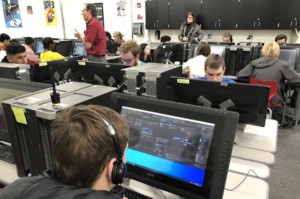The Flexibility to Better Serve Students
Tom Boasberg continues to innovate in Denver. They created an in-district autonomy zone called Innovation Schools. The Board has approved the transition of 12 schools in the last few months. Here’s part of Tom’s newsletter:
One size does not fit all. We know that is true for our schools, and that is the very point of Innovation Schools: to ensure that our schools have the flexibility to best meet the needs of our students.
That is why I am so pleased to see more DPS schools choosing to become Innovation Schools under state law and obtain flexibility from collective bargaining agreements, state law, and district policies. Innovation Schools have the opportunity to use people, time and money in ways their school community deems best. For instance, Innovation Schools can schedule their school year and day to create more learning time for students; can hire, retain, and reward the best teachers; and can use their budget dollars in the way that best suits their kids’ needs. They have no limits, for example, on how many minutes a week teachers can meet to talk about their work, or on career ladders or incentive pay for teachers.
In the last three months, the Denver Board of Education has approved 12 new schools for Innovation status, including six that were approved last Thursday. All of the schools that are part of our school-improvement and turnaround efforts in Far Northeast Denver are taking advantage of this flexibility to extend their school year by six days and their school day by and hour – an approximately 20% increase, taken together, in instructional time for students.
The Innovation Schools movement started about five years ago, when a group of teachers at our Bruce Randolph School, which was lauded by President Obama in this year’s State of the Union address, was crafting a plan to transform their struggling school with low student achievement into a high-achieving school. Teachers wanted to keep the school and classroom doors open longer, giving them precious extra time for instruction. The teachers were frustrated, however, by the inflexibility of the collective bargaining agreement with the teachers union, as well as by district policies and state law, on issues such as teacher-planning time and forced placement of tenured teacers. They found they had very little control over how much time they spent in school or how that time was structured.
As a result, the Bruce Randolph faculty successfully sought waivers from those rules and became an autonomous school, free to set their own policies and schedules for the school calendar and for teacher-collaboration sessions.
The success of Bruce Randolph’s autonomy-driven reforms led to the passage of the 2008 Innovation Schools Act, which allows any public school in Colorado to apply for the same type of freedoms that Bruce Randolph was given. DPS, next year, will have 19 schools that have been granted Innovation status under the ’08 law, pending approval by the State Board of Education. These schools are putting their added flexibility to good use in service of their students, with a disproportionate number of Innovation schools represented in the list of high-growth schools on this year’s third-grade state assessment. For example, Valdez Elementary School in Northwest Denver, which earned Innovation status last year, posted the second-highest gain this year in third-grade literacy of any school in the city. (Click here to watch a Fox-31 story on Valdez’s success.)
The flexibility that comes with Innovation status doesn’t only allow for more classroom time for kids, it also gives teaching staffs more flexibility to schedule planning time with their peers—time to share best practices, to problem-solve collaboratively, and to build a close-knit instructional team. Principals also have more control over hiring and retaining the best talent for their classrooms, with added flexibility in pay.
For More







0 Comments
Leave a Comment
Your email address will not be published. All fields are required.